ISSN ONLINE(2319-8753)PRINT(2347-6710)
ISSN ONLINE(2319-8753)PRINT(2347-6710)
Sagar Sahu1, Dr. S. P. Mishra2
|
| Related article at Pubmed, Scholar Google |
Visit for more related articles at International Journal of Innovative Research in Science, Engineering and Technology
The aim of this study is to investigate the compressive strength and workability properties of polymer modified concrete. In this work two different types of polymers are used at different dosages to modify the cement concrete. Besides, test on a series of concrete mixes without polymer was also examined. The influence of different polymers dosages in respect of workability and compressive strength characteristics are found. A comparative study has been carried out to highlight the effect of two different polymers on fresh and hardened properties of polymer modified concrete. Developing mix design using polymer Glenium B-233 and Glenium ACE-30 with three different dosages 0.2%, 0.4% and 0.6% for M-20, M-30 and M-40 grade as per IS 10262: 2009. Concrete mixes prepared and tested in fresh and hardened state for total 144 numbers of concrete cubes were moulded
Keywords |
| POLYMER, CONCRETE, INVESTIGATIONS, CONSTRUCTION INDUSTRY |
I.INTRODUCTION |
| Polymer as admixture can improve the properties like higher strength and lower water permeability than the conventional concrete. It is used in mortar and concrete as an admixture to increase resistance to water penetration, improve abrasion resistance and durability.The materials from local area have been selected and tested on their properties performed in lab. Polymer used in this study are based on current field practices .Concrete mix design with and without polymer performed. Mixes have been tested for workability and strength properties. Analysis of results done and shown graphically. |
| performed to label each object separately. Finally, the set of selection criteria is applied to filter out non text regions. After text detection, text inpainting is accomplished by using exemplar based Inpainting algorithm.Paper is organized as follows. Section II describes automatic text detection using morphological operations, connected component analysis and set of selection or rejection criteria. The flow diagram represents the step of the algorithm. After detection of text, how text region is filled using an Inpainting technique that is given in Section III. Section IV presents experimental results showing results of images tested. Finally, Section V presents conclusion. |
II. MATERIAL AND PROPERTIES |
| Cement: The cement used was Portland Slag the cement is in dry powdery form with the chemical compositions and physical characteristics |
| Fine Aggregates: Fine aggregates or more commonly known as sand should be the Coarse, Medium, or Fine grading requirements. The fine aggregate was air dried for 24 hours to obtain a saturated surface dry condition to ensure that water-cement ratio is not affected. In this study, sand was used and sieve analysis was done prior to using it to determine the fine aggregate passing the 600μm sieve. |
| Coarse Aggregates: A few properties required for mix design are shape and texture, size gradation, and moisture content. Aggregates’ shape affects the workability of the concrete and the surface of the texture affects the bond between matrices. In this study crushed aggregates from quarry NANDINI with the nominal size of 20 mm were used. |
| Water: Water is an important element in concrete mix and should contain no impurities as impurities affect the hydration process. |
| Polymer: The word polymer comes from Greek words polymers, where poly meaning “many” and mere meaning “parts”. A comparative study has been carried out to highlight the effect of two different polymers on fresh and hardened properties of polymer modified concrete. Developing mix design using polymer Glenium B-233 and Glenium ACE-30 with three different dosages 0.2% , 0.4% and 0.6% for M-20 , M-30 and M-40 grade as per IS 10262: 2009. Concrete mixes prepared and tested in fresh and hardened state for total 144 numbers of concrete cubes were moulded. |
III. RESULT AND ANALYSIS |
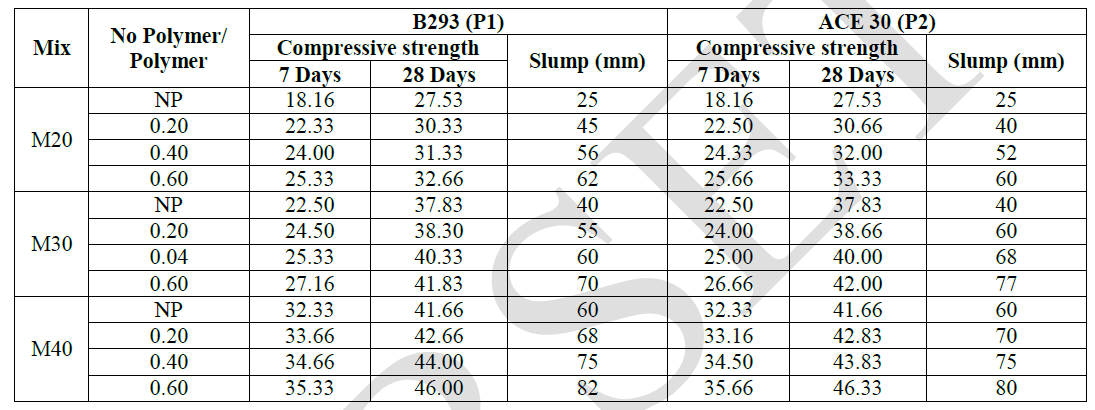 |
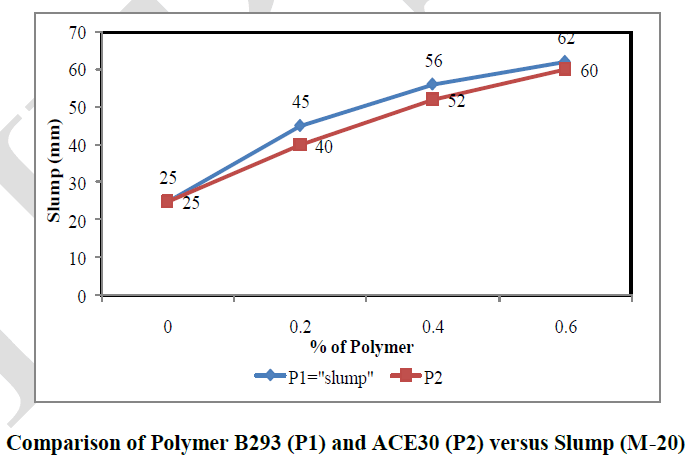 |
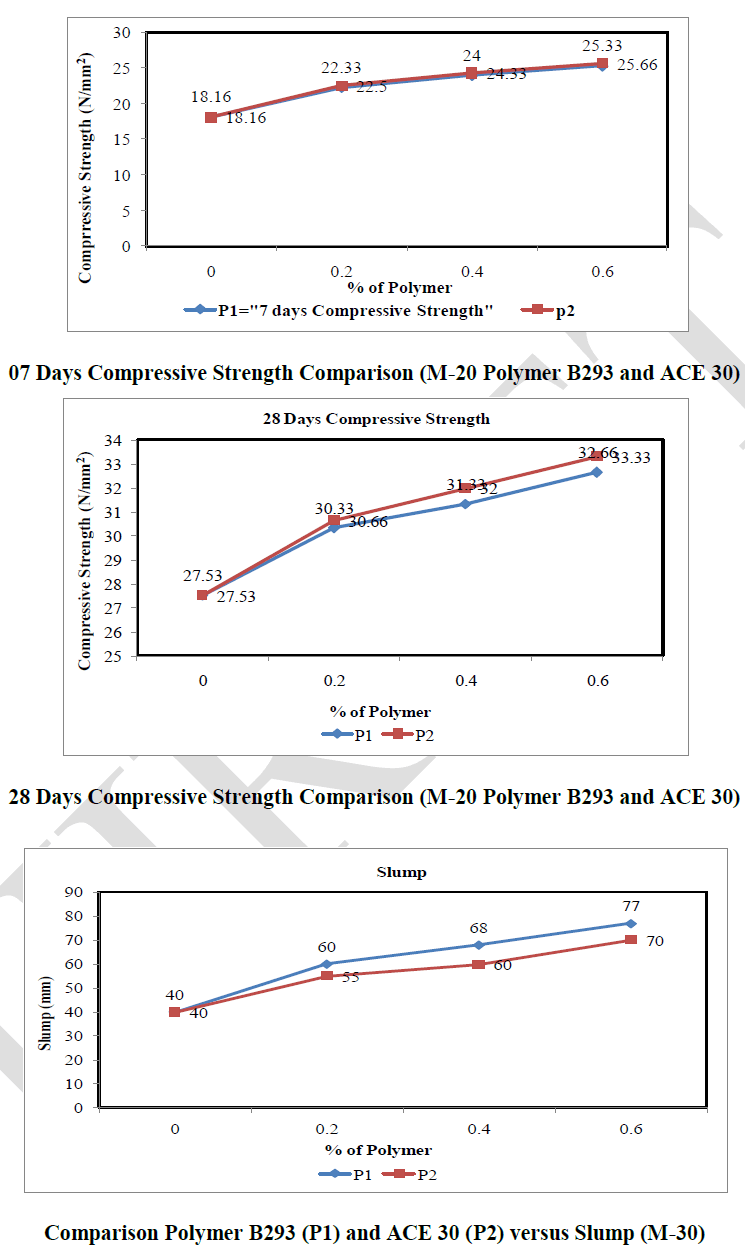 |
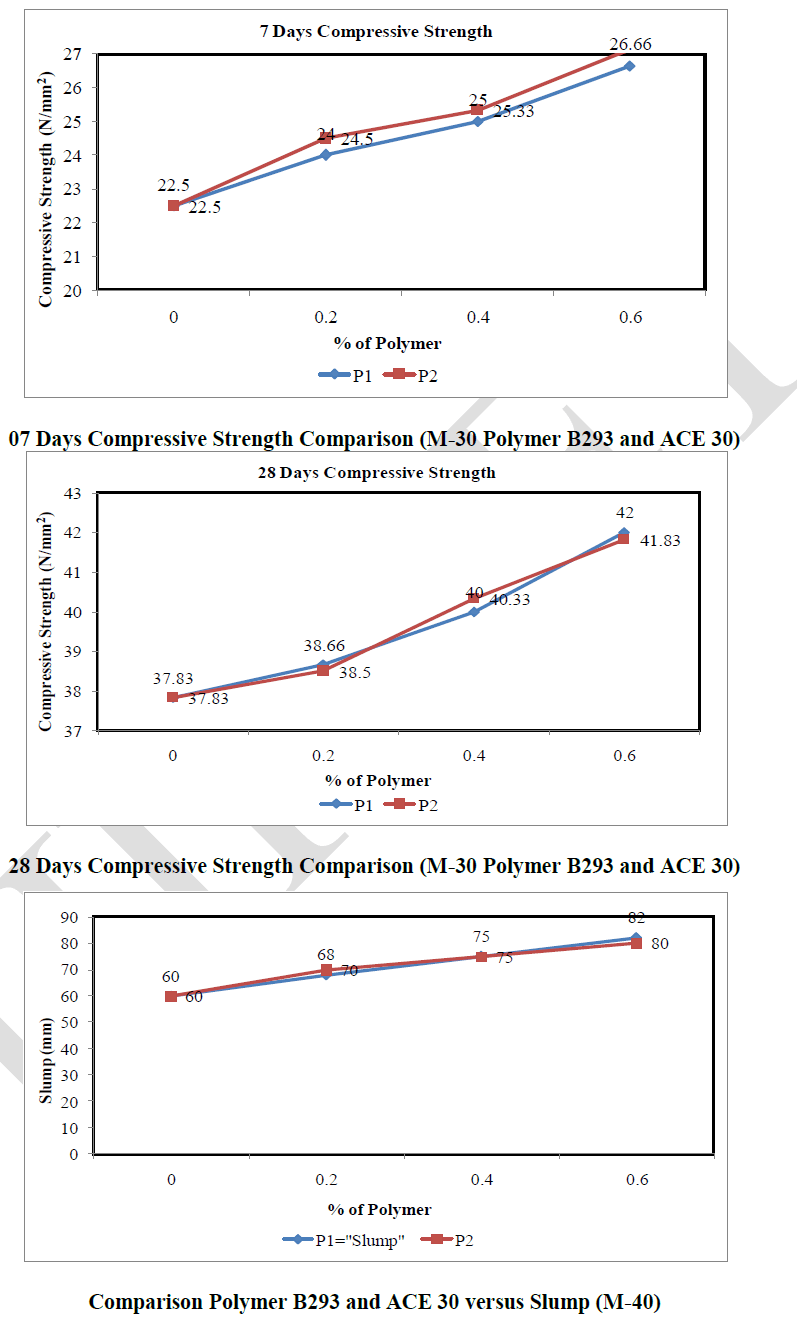 |
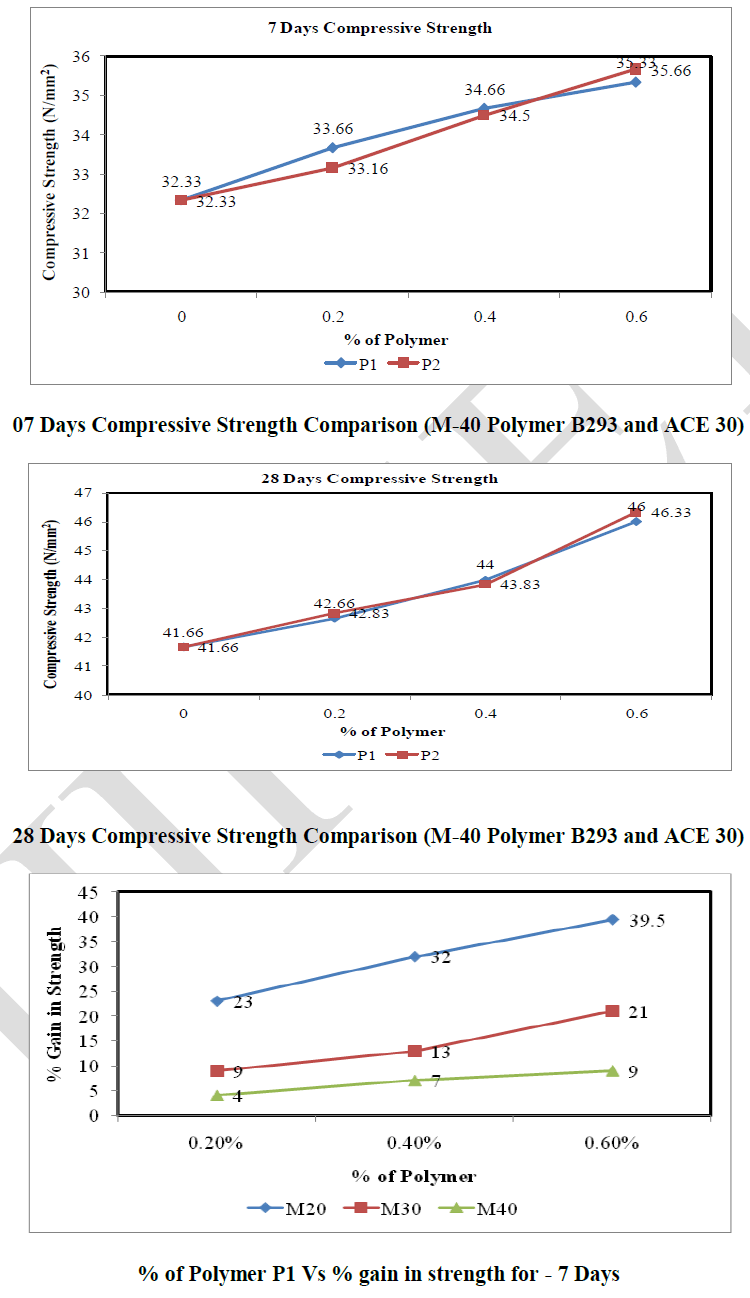 |
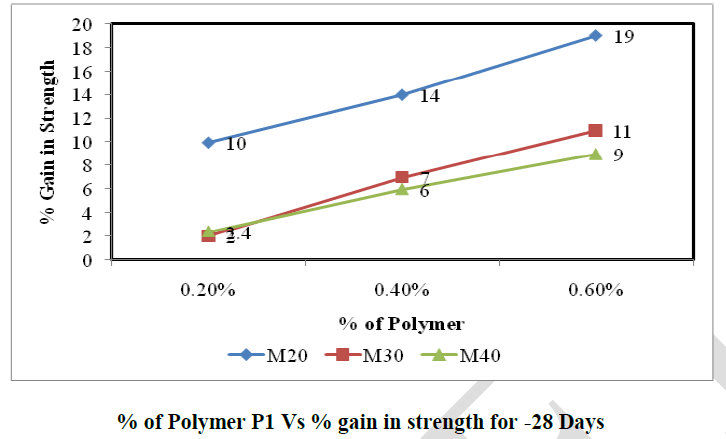 |
| Influence of Doses of Polymers on different Grade of Concrete in Fresh and Hardened State: |
| Slump observed for M20, M30 and M40 concrete indicates slight variation due to type of polymers, but it is continuously increasing with increase in percentage of polymers. For percentage increase of polymers from 0.2-0.6 it was found that 7 days and 28 days strength is increasing for all grade of concrete. Cement content can be reduced when polymers are being used. Experimental result shows that by using any of the two polymers they not only increase strength at 7, 28 days but they also improve work ability. Percentage gain of strength is achieved maximum in M20 grade of concrete for all percentage variations observed in both of the types of the polymers. Use of polymer B293, ACE30 shows improvement in slump and compressive strength of concrete in all the grades i.e. M20, M30 and M40. |
| Summary and Conclusions |
| All conclusions drawn upon here are based on the objectives of this study and observations done throughout the whole course of this study. In studying the effects of polymer addition on compressive strength at different age, mix design with constant workability and water-cement ratio were used. The conclusions are: |
| Compressive strength is inversely proportional to total porosity. Therefore, the higher the compressive strength, the lower the total porosity. |
| Percentage gain of strength is achieved maximum in M20 grade of concrete for all percentage variations observed in both of the types of the polymers |
| Experimental result shows that by using any of the two polymers they not only increase strength at 7, 28 days but they also improve work ability |
| Workability of polymer-modified concrete increased with the increment of p/c ratio when the mix was made based on the same w/c due to the lubricating system of polymer that improves the fluidity of the concrete mix. |
| Water-cement ratio of polymer-modified concrete decreased with the increase of p/c ratio while maintaining the slump of the mix. |
| The compressive strength of polymer-modified concretes is lower than made of unmodified concretes. Mixes with constant w/c ratio have a lower compressive strength compared to mixes done with constant workability. Samples with 10% polymer content show a higher compressive strength as compared to samples with 20% p/c ratio. |
References |
|